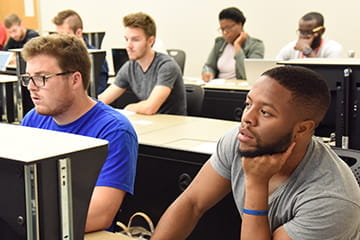The Medical Scientist Training Program curriculum is flexible and designed to meet individual goals. Students have direct access to top clinical and graduate faculty and courses at IU School of Medicine. A typical academic plan permits most students to complete the combined degree in seven to eight years. One advantage of the program is that up to 30 credit hours of pre-clerkship coursework may be applied toward the IU School of Medicine PhD.
The Medical Scientist Training Program spans three distinct stages of training: the pre-clinical, systems-based knowledge stage (Phase 1 of the MD curriculum), the graduate school coursework and dissertation research stage, and the clinical clerkship (Phase 2 of the MD curriculum) and sub-internship/elective stage (Phase 3 of the MD curriculum).



